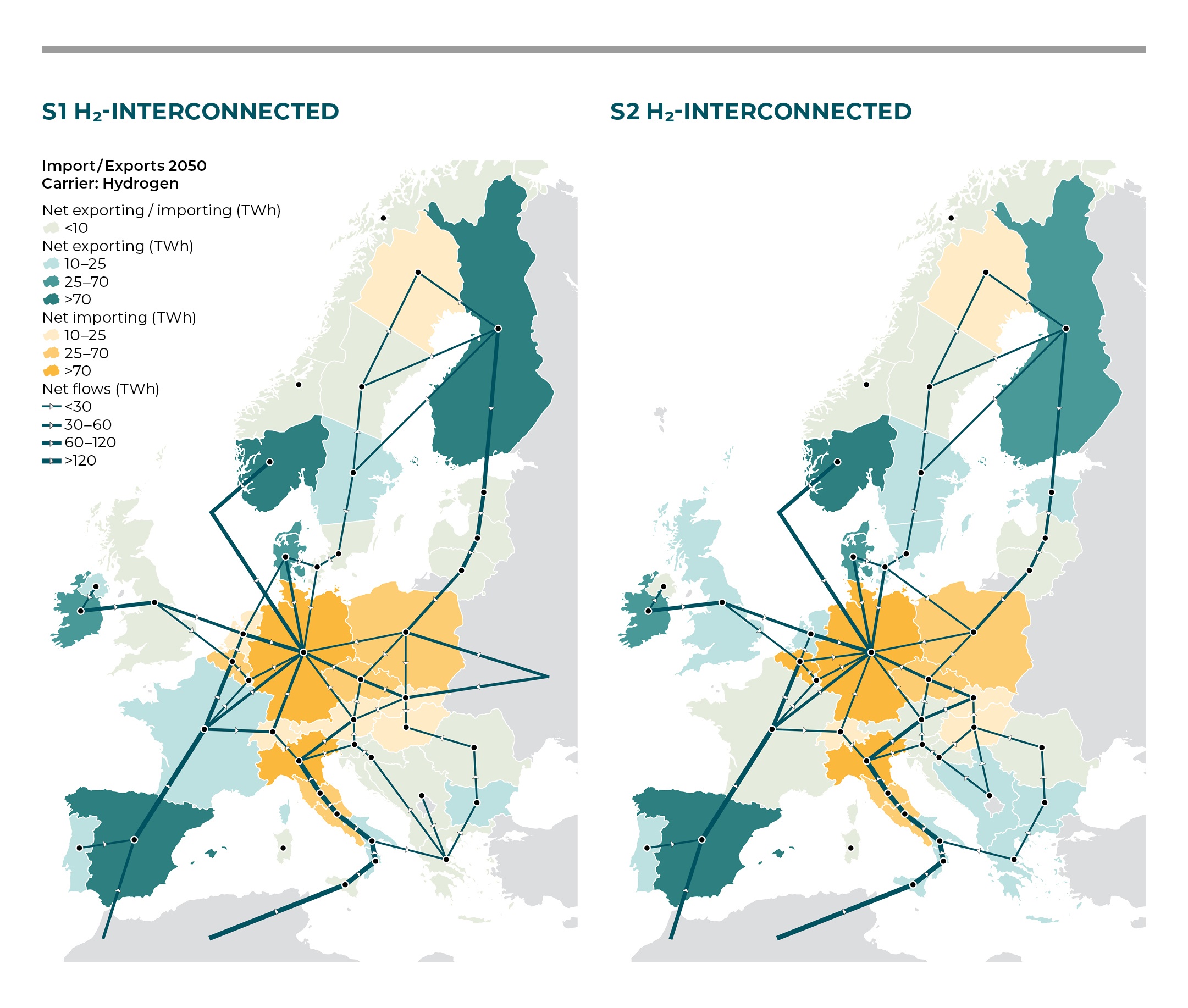23 Mar 2023
Europa
OGE, DESFA, Enagás, Energinet, Fluxys, Gasunie, GRTgaz, Nordion, ONTRAS, Snam, Teréga, CIB, Fachverband Biogas, EBA Creos Luxembourg, Gasgrid Finland, Gassco, National Gas Transmission, NET4GAS, Guidehouse
Press release
PanEU report – Assessing the benefits of a pan-European hydrogen transmission network
Gas for Climate consortium kicks off a large energy system modelling study assessing the benefits of a pan-European hydrogen transmission network.
Renewable and low carbon gases play a key role for the transition towards an affordable, secure, and sustainable European energy system. The EU strategy on hydrogen, adopted in 2020, put forward a vision for the creation of a European hydrogen ecosystem, in line with the European Green Deal that sets ambitious targets towards achieving net zero emissions by 2050. The REPowerEU plan further emphasised the important role of hydrogen not only for the energy transition but also to reduce dependency on Russian natural gas imports. Achieving the REPowerEU targets by 2030 and a fully decarbonised European energy system at the latest by 2050 is ambitious. It will require a rapid deployment of domestic hydrogen and biomethane production capacities, hydrogen storage and import infrastructure as well as a pan-European hydrogen transmission network.
The Gas for Climate consortium (with the addition of Creos Luxembourg, Gasgrid Finland, Gassco, National Gas Transmission and NET4GAS) releases today a large energy system modelling study assessing the benefits of a Pan-European hydrogen transmission network. This study is conducted by means of an integrated energy system model which optimises the expansion and operation of the pan-European hydrogen, electricity, and methane systems over the timeframe 2030 – 2050. The model generates two versions of the potential future energy system in the EU and neighbouring countries in two scenario groups expressing high and low evolution of future hydrogen demand.
The five corridors supplying hydrogen to Central Europe, identified by the EHB initiative, are clearly visible:
- two supply corridors from the south of Europe via Italy and the Iberian Peninsula, where domestic hydrogen produced mainly from solar power is complemented by renewable hydrogen imports from North Africa,
- a North Sea supply corridor that makes use of the vast offshore wind resource potentials for renewable hydrogen production complemented by some low carbon hydrogen produced in Norway and the UK,
- a Nordic supply corridor which exports renewable hydrogen produced mainly by wind and hydro power from countries around the Baltic Sea, and
- a supply corridor from East and South-East Europe that taps renewable hydrogen potentials in South-East Europe and Ukraine.

Results of this study show that the development of a pan-European H2 network is a key element for the European energy transition. It contributes significantly to an affordable, secure, and sustainable energy supply and provides significant benefits already in the short-term. Immediate actions are needed to ensure that the required infrastructure is in place when needed.
